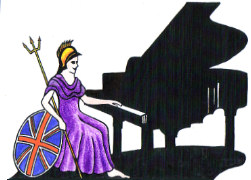Piano Accompanists Accompanying choirs, singers, violinists, and many other instruments for exams, recitals and competitions.
Piano Accompanists Temple Mills

UK Piano Page

Browsing England » London » Temple Mills » Piano Accompanists
This is a list of piano accompanists, accompanying singers, violinists, and many other instruments for exams, recitals, and competitions, sorted in county order. Click on your county and this will take you to your nearest accompanist.
If you are an accompanist for ABRSM exams, recitals or competitions and wish to be included in our list, please click on Add An Accompanists above and fill in the forms provided, it's free.
To find the nearest piano Accompanists that covers your area, type your town in the search box below.
Music Festival for performers and guests Our 10th
18-06-2022 01:30PM
The Morecambe Bay Piano Group was set up to extend
11-12-2021 02:00PM
The Morecambe Bay Piano Group was set up to extend
08-01-2022 02:00PM
The Morecambe Bay Piano Group was set up to extend
12-02-2022 02:00PM
Violin
A single violin is made from over 70 individual pieces of wood. the string tension is around 12 LBS compared to a pianos 160lbs on the steels and 20% more on the wound strings.